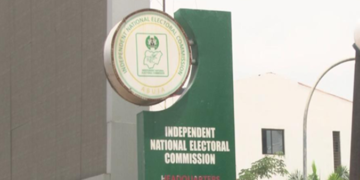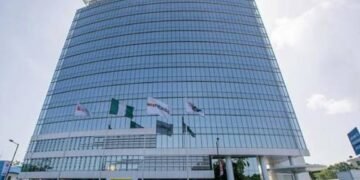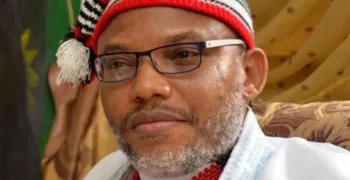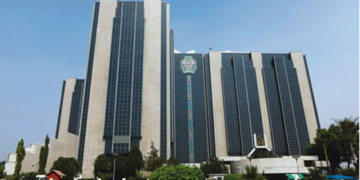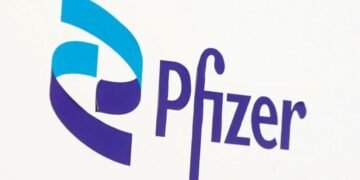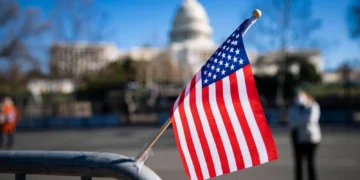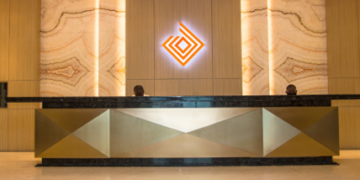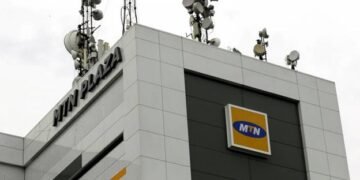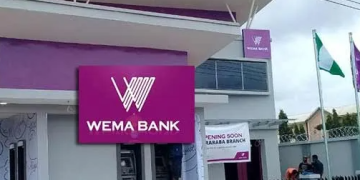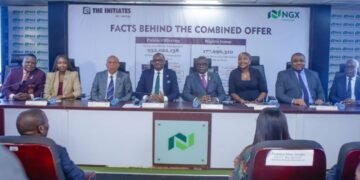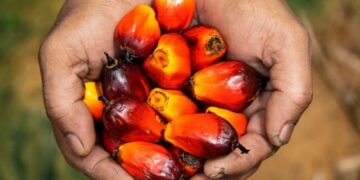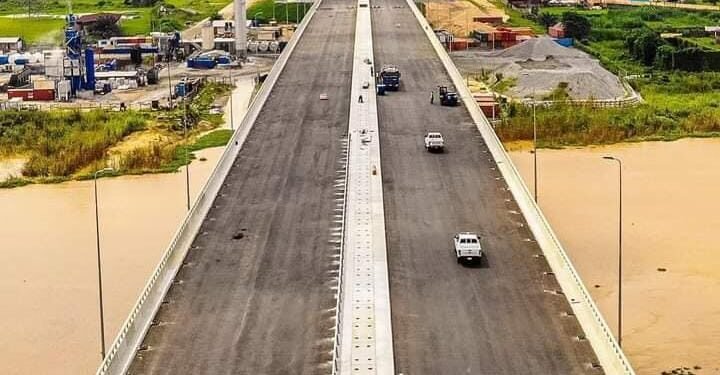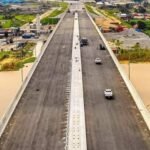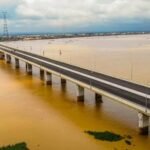There has been debates over the funding of the 2nd Niger Bridge, a key national infrastructure, that connects Asaba and Onitsha, designed to eliminate traffic congestion on the Niger river bridge, built in 1965.
Upon completion, the bridge will ease traffic flow, improve road safety, and create greater opportunities for local residents by advancing the commercial viability of the immediate area and regenerating economic life.
The scope of works as being built include the construction of 1.6 km long bridge, 10.3 km Highway, Owerri interchange and a toll station.
The foundation of the bridge was laid down on May 24, 2007 by the Federal Government which was to cost N58.6 billion under PPP arrangement.
The Obasanjo government’s plan for a six lane, 1.8 km tolled bridge, was to be completed in three-and-half years.
The bridge was to be funded through a public-private partnership (PPP), with the contractor, Gitto Group, providing 60 per cent of the fund, the Federal Government providing 20 per cent and the governments of Anambra and Delta States each contributing 10 per cent.
The then president Olusegun Obasanjo said at the event that the delay in the commencement of the project, which was said to be one of his campaign promises to the people of the Southeast before the 1999 general election was due to the huge funds needed and legal backing.
Then enter President Goodluck Jonathan with a plan to execute the project under a Public Private Partnership (PPP) arrangement for a concession period of 25 years, precisely, through a ‘Design, Build, Finance, Operate and Transfer (DBFOT)’ model.
At inception, President Goodluck Jonathan expressed confidence in the capacity and competence of the Concessionaire, Messrs Julius Berger-NSIA Consortium, to deliver on this project, at the construction cost of about N117 billion Naira.
Read also: Who is funding the 2nd Niger Bridge – Part 2
A Vanguard report on 18 January, 2015 quoted the then President, Goodluck Jonathan as saying that the N130 billion project was being done through the Public Private Partnership (PPP) and managed by Nigeria’s Sovereign Wealth Fund (Nigerian Sovereign Investment Authority – NSIA).
President Goodluck Jonathan would go on to say that “So far, N10 billion has been spent and, out of it, N1.5 billion was used for paying for damages and others. In fact, the link road that is about three kilometres from the main road to the bridge, almost 80 percent of the road has been fixed.”
“So, the major projects that will occupy a number of people to execute this project, we asked Julius Berger and the Minister of Works, and their commitment is that the project will be completed within 14 months. And they will surely do it,” – President Goodluck Jonathan said.
The NSIA 2015 Annual report confirms what the then President said in Onitsha when he visited the Obi of Onitsha.
The report mentioned that NSIA through its Motorways subsidiary, in partnership with Julius Berger Investment Limited and under a Public Private Partnership (PPP) with the Federal Government of Nigeria (FGN), is undertaking the development of a second bridge crossing over the Niger River through a design, finance, build, operate and maintain concession arrangement (DFBOM).
The Project was an 11.9km greenfield road and toll bridge project connecting Delta and Anambra States through Asaba and Onitsha
A review of the 2015 Annual report of NSIA shows that in the year 2015, early works III (EW3) commenced as part of the preliminary construction activities on the 2nd Niger Bridge project site, just as the President stated at the time.
The Early works III was completed and negotiation of the Concession Agreement for the bridge project was in advanced stages as at the end of December 2015, the report said.
Going a year back in 2014, the NSIA 2014 Annual report stated that NSIA through the Nigeria Infrastructure Fund, initiated several major projects in 2014 including co-development of the Second Niger Bridge through a Public-Private Partnership (PPP)
The report went further to say that NSIA continued to develop the Second Niger Bridge, through a partnership between its Motorways vehicle, NSIA Motorways Investment Company, NMIC and Julius Berger Investment (JBI).
The Presidential groundbreaking ceremony for the bridge took place in March 2014 and was immediately followed by the deployment of Engineering, Procurement and Construction (EPC) contractors for early works.
This project was to be the first major Public-Private Partnership (PPP) undertaken by the Federal Government of Nigeria, and heralds the introduction of private financing into the Motorways sector at federal level. Financial close was anticipated within the first half of 2016.
In July 2014, NMIC, JBI and the Federal Government of Nigeria (FGN) entered into an indemnity agreement in order to start early works on the Second Niger Bridge project.
An indemnity agreement, also known as a hold harmless agreement, waiver of liability, release of liability, or no-fault agreement, safeguards the indemnified party against loss or damages associated with a third-party business arrangement.
The FGN contributed ₦8.5billion as part of the equity contribution of ₦30 billion in the Second Niger Bridge project. This amount was put under the control of NMIC, and have been used in carrying out the initial works.
The activities of the joint operation was to be transferred to the intended concessionaire, that is, Second Niger Bridge Development Company when it starts operations.
The Federal Government of Nigeria made a payment of ₦8.5 billion to the Authority’s subsidiary, NSIA Motorways Investment Company (NMIC) to enable the execution of the early works phase of the construction of the Second Niger Bridge in advance of the agreement of the terms of the service concession between the Federal Government of Nigeria and the Second Niger Bridge Development Company.
This amount pledged by the Federal Government of Nigeria as equity contribution towards subscription and allotment of shares of the Second Niger Bridge Development Company.
In 2016, NSIA saw to the completion of Early Works III on the site. Following this, the Authority proposed a revised funding plan to the Ministry of Power, Works and Housing, which is under review. It said that once a new financing strategy is agreed upon, the next stage of construction will commence, it’s 2016 Annual report stated.
The Muhammadu Buhari led Federal Government would abandon the Public Private Partnership (PPP) arrangement put in place by the Goodluck Jonathan administration.
In an October 25, 2021 report, Premium Times quoted the Minister of Works and Housing, Babatunde Fashola as having said that the Buhari administration abandoned the Public Private Partnership (PPP) on major infrastructure projects, including the Second Niger Bridge, and the Lagos-Ibadan expressway because investors could not secure needed funding from banks.
President Muhammadu Buhari would go on to finance the continuation of the construction of the Second Niger bridge through a newly established Presidential Infrastructure Development Fund (PIDF).
Continue reading: Who is funding the 2nd Niger Bridge – Part 2
Nnamdi Maduakor is a Writer, Investor and Entrepreneur

